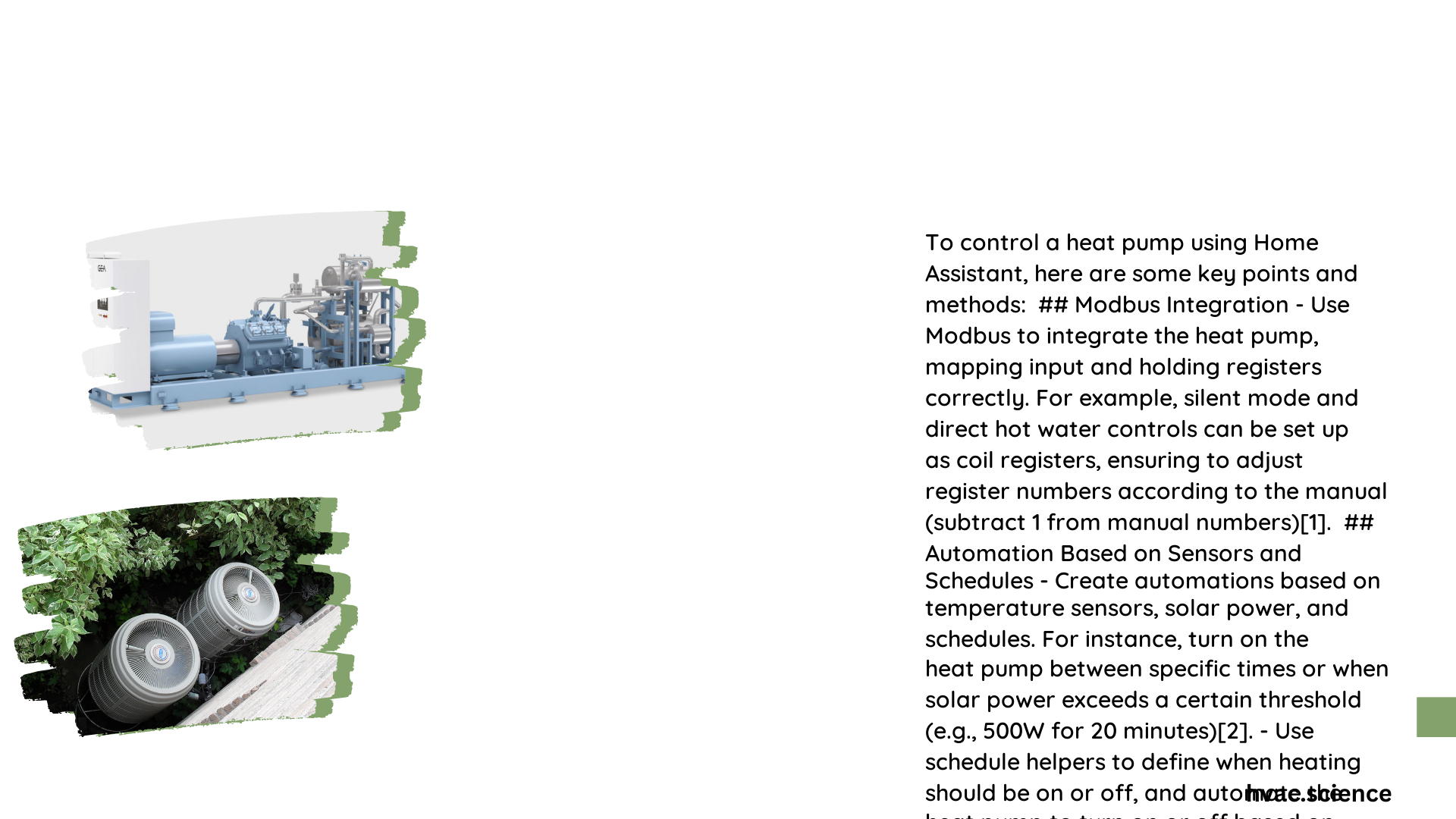Heat pump control in Home Assistant represents a sophisticated approach to smart home climate management, enabling users to seamlessly integrate advanced heating and cooling systems with intelligent automation. By leveraging custom hardware solutions, cloud services, and robust Home Assistant configurations, homeowners can achieve precise temperature control, energy efficiency, and comprehensive monitoring of their heat pump systems.
What Hardware Do You Need for Heat Pump Control?
Essential Hardware Components
- Communication Interface
- HeishaMon PCB
- Panasonic WiFi module
- MQTT-enabled communication board
Connectivity Options
| Connection Type | Complexity | Setup Difficulty |
|---|---|---|
| Cloud Service | Low | Easy |
| Direct MQTT | Medium | Moderate |
| Custom PCB | High | Advanced |
How to Set Up Panasonic Aquarea Smart Cloud Integration?

Account and Device Preparation
- Create Panasonic Aquarea Smart Cloud account
- Locate device ID and password
- Verify WiFi module compatibility
Home Assistant Configuration Steps
- Install Home Assistant (version 2024.2+)
- Enable HACS (Home Assistant Community Store)
- Add “Aquarea Smart Cloud” integration
- Enter authentication credentials
- Discover and configure devices
What Automation Techniques Can You Implement?
Temperature Control Strategies
- Dynamic temperature adjustment
- Zone-based heating/cooling
- Energy consumption optimization
- Seasonal mode switching
Advanced Automation Examples
automation:
- alias: "Adaptive Temperature Control"
trigger:
- platform: time_pattern
minutes: '/30'
condition:
- condition: numeric_state
entity_id: sensor.indoor_temperature
below: 20
action:
- service: climate.set_temperature
target:
entity_id: climate.heat_pump
data:
temperature: "{{ states('sensor.indoor_temperature') + 1 }}"
What Are the Potential Challenges?
Integration Limitations
- Internet connectivity requirements
- Authentication complexity
- Device compatibility issues
- Performance variability
How to Monitor Energy Consumption?
Tracking Metrics
- Hourly energy usage
- Power consumption rates
- Operational efficiency indicators
- Cost estimation sensors
What Are Recommended Best Practices?
Setup and Maintenance
- Regular firmware updates
- Comprehensive testing
- Gradual automation implementation
- Continuous performance monitoring
Estimated Cost and Investment
Financial Considerations
- Hardware: $50 – $500
- Installation: $100 – $300
- Potential Energy Savings: 20-40% annually
Performance Optimization Tips
Efficiency Enhancements
- Use precise temperature sensors
- Implement multi-zone control
- Create adaptive scheduling
- Integrate weather forecasting
Troubleshooting Common Issues
Quick Resolution Strategies
- Verify network connectivity
- Check MQTT broker status
- Validate authentication credentials
- Review Home Assistant logs
Future Development Potential
Emerging Technologies
- AI-driven climate control
- Machine learning optimization
- Enhanced predictive maintenance
- Improved energy management algorithms
Conclusion
Heat pump control in Home Assistant offers unprecedented flexibility and intelligence in home climate management. By understanding hardware requirements, integration techniques, and automation strategies, users can transform their HVAC systems into responsive, efficient smart home solutions.
